In Another World.

In Another World.
More Posts from Night-hides-the-world and Others
Hubble has discovered a dwarf star that devours its own solar system. It's like a cosmic cannibal

Astronomers used archival data from the Hubble Space Telescope and other observatories to analyze the spectral properties of the white dwarf star G238-44.
Detected elements show that the dead star swallows debris from both the inside and the outside of its system. It's a case of "cosmic cannibalism," say the study's authors, published on the Hubble Telescope website.
G238-44 was a Sun-like star that lost its outer layers and no longer burned fuel through nuclear fusion. The discovery that stellar debris simultaneously captures matter from its asteroid belt and Kuiper belt-like regions at the edge of the solar system, including ice bodies, is significant because it suggests that a "water tank" may be a common feature in outer areas. of planetary systems.
‼️When a star like the Sun expands and becomes a red giant, at the end of its life, it loses mass by releasing its outer layers.
➡️A consequence of this may be the gravitational scattering of small objects, such as asteroids, comets and satellites, to the large planets in the system. Hit in this way, surviving objects can be thrown into very eccentric orbits.‼️
☑️ "After the phase of the red giant, the remaining white dwarf star is compact - no bigger than Earth. The planets get very close to the star and experience strong forces of attraction that break them to pieces, creating a disk of gas and dust that eventually falls on the surface of the white dwarf star, "said Johnson.

Making a Spectacle of Star Formation in Orion
Looking like a pair of eyeglasses only a rock star would wear, this nebula brings into focus a murky region of star formation. NASA’s Spitzer Space Telescope exposes the depths of this dusty nebula with its infrared vision, showing stellar infants that are lost behind dark clouds when viewed in visible light.
Best known as Messier 78, the two round greenish nebulae are actually cavities carved out of the surrounding dark dust clouds. The extended dust is mostly dark, even to Spitzer’s view, but the edges show up in mid-wavelength infrared light as glowing, red frames surrounding the bright interiors. Messier 78 is easily seen in small telescopes in the constellation of Orion, just to the northeast of Orion’s belt, but looks strikingly different, with dominant, dark swaths of dust. Spitzer’s infrared eyes penetrate this dust, revealing the glowing interior of the nebulae.
Credit: NASA/JPL/Spitzer
COMPARISON PHOTOS: hubble vs james webb
SMACS 0723
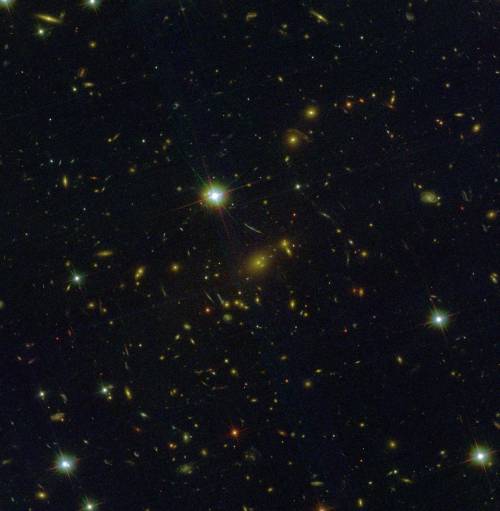
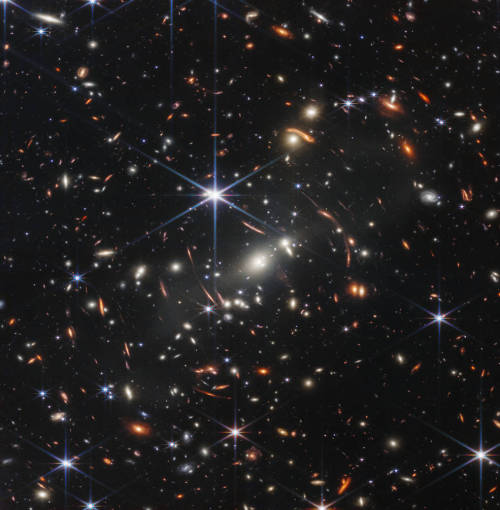
southern ring nebula

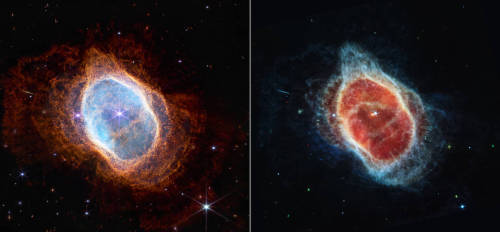
carina nebula (NGC 3324)
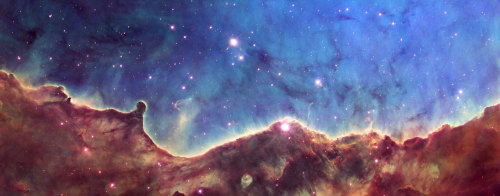
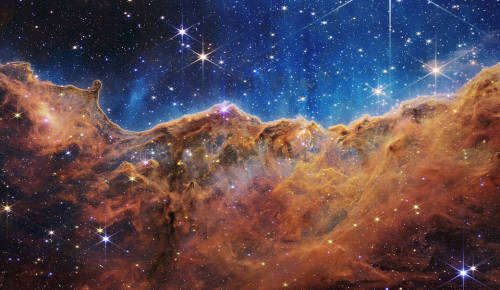
stephan's quintet


Everyone (Even You!) Can Use Satellite Data
At NASA we’re pretty great at putting satellites and science instruments into orbit around Earth. But it turns out we’re also pretty great at showing people how to get and use all that data.
One of the top ways you can learn how to use NASA data is our ARSET program. ARSET is our Applied Remote Sensing Training program and it helps people build skills that integrate all these Earth science data into their decision making.

ARSET will train you on how to use data from a variety of Earth-observing satellites and instruments aboard the International Space Station.
Once you take a training, you’ll be in GREAT company because thousands of people have taken an ARSET training.

We hold in person and online trainings to people around the world, showing them how to use NASA Earth science data. Trainings are offered in air quality, climate, disaster, health, land, water resources and wildfire management.
For example, if you’re trying to track how much fresh drinking water there is in your watershed, you can take an ARSET training and learn how to find satellite data on how much precipitation has fallen over a certain time period or even things like the ‘moistness’ of soil and the quality of the water.

Best yet, all NASA Earth observing data is open and freely available to the whole world! That’s likely one of the reasons we’ve had participants from 172 of the approximately 190 countries on Earth.

Since its beginning 10 years ago, ARSET has trained more than 30 thousand people all over the world. They’ve also worked with people from more than 7,500 different organizations and that includes government agencies, non-profit groups, advocacy organizations, private industry.
And even though 2019 is ARSET’s 10th birthday – we’ve only just begun. Every year about 60% of the organizations and agencies we train are new to the program. We’re training just about anyone who is anyone doing Earth science on Earth!
Join us, learn more about how we train people to use Earth observing data here, and heck, you can even take a training yourself: https://arset.gsfc.nasa.gov/.
Make sure to follow us on Tumblr for your regular dose of space: http://nasa.tumblr.com
![A Multi-Camera 360° Panoramic Timelapse Of The Stars By Vincent Brady [VIDEO]](https://64.media.tumblr.com/4e12ed79b6fa93fbd2f17ccd004921d6/tumblr_n7h573O5RR1rte5gyo1_500.gif)
A Multi-Camera 360° Panoramic Timelapse of the Stars by Vincent Brady [VIDEO]

shit man this got me emotional

12072022: Edge of the Carina Nebula | First Images from The James Webb Space Telescope. Photography credits: NASA, ESA, CSA, and STScI
Solar System 10 Things: Looking Back at Pluto
In July 2015, we saw Pluto up close for the first time and—after three years of intense study—the surprises keep coming. “It’s clear,” says Jeffery Moore, New Horizons’ geology team lead, “Pluto is one of the most amazing and complex objects in our solar system.”
1. An Improving View

These are combined observations of Pluto over the course of several decades. The first frame is a digital zoom-in on Pluto as it appeared upon its discovery by Clyde Tombaugh in 1930. More frames show of Pluto as seen by the Hubble Space Telescope. The final sequence zooms in to a close-up frame of Pluto taken by our New Horizons spacecraft on July 14, 2015.
2. The Heart

Pluto’s surface sports a remarkable range of subtle colors are enhanced in this view to a rainbow of pale blues, yellows, oranges, and deep reds. Many landforms have their own distinct colors, telling a complex geological and climatological story that scientists have only just begun to decode. The image resolves details and colors on scales as small as 0.8 miles (1.3 kilometers). Zoom in on the full resolution image on a larger screen to fully appreciate the complexity of Pluto’s surface features.
3. The Smiles

July 14, 2015: New Horizons team members Cristina Dalle Ore, Alissa Earle and Rick Binzel react to seeing the spacecraft’s last and sharpest image of Pluto before closest approach.
4. Majestic Mountains

Just 15 minutes after its closest approach to Pluto, the New Horizons spacecraft captured this near-sunset view of the rugged, icy mountains and flat ice plains extending to Pluto’s horizon. The backlighting highlights more than a dozen layers of haze in Pluto’s tenuous atmosphere. The image was taken from a distance of 11,000 miles (18,000 kilometers) to Pluto; the scene is 780 miles (1,250 kilometers) wide.
5. Icy Dunes

Found near the mountains that encircle Pluto’s Sputnik Planitia plain, newly discovered ridges appear to have formed out of particles of methane ice as small as grains of sand, arranged into dunes by wind from the nearby mountains.
6. Glacial Plains

The vast nitrogen ice plains of Pluto’s Sputnik Planitia – the western half of Pluto’s “heart”—continue to give up secrets. Scientists processed images of Sputnik Planitia to bring out intricate, never-before-seen patterns in the surface textures of these glacial plains.
7. Colorful and Violent Charon

High resolution images of Pluto’s largest moon, Charon, show a surprisingly complex and violent history. Scientists expected Charon to be a monotonous, crater-battered world; instead, they found a landscape covered with mountains, canyons, landslides, surface-color variations and more.
8. Ice Volcanoes

One of two potential cryovolcanoes spotted on the surface of Pluto by the New Horizons spacecraft. This feature, known as Wright Mons, was informally named by the New Horizons team in honor of the Wright brothers. At about 90 miles (150 kilometers) across and 2.5 miles (4 kilometers) high, this feature is enormous. If it is in fact an ice volcano, as suspected, it would be the largest such feature discovered in the outer solar system.
9. Blue Rays

Pluto’s receding crescent as seen by New Horizons at a distance of 120,000 miles (200,000 kilometers). Scientists believe the spectacular blue haze is a photochemical smog resulting from the action of sunlight on methane and other molecules in Pluto’s atmosphere. These hydrocarbons accumulate into small haze particles, which scatter blue sunlight—the same process that can make haze appear bluish on Earth.
10. Encore

On Jan. 1, 2019, New Horizons will fly past a small Kuiper Belt Object named MU69 (nicknamed Ultima Thule)—a billion miles (1.5 billion kilometers) beyond Pluto and more than four billion miles (6.5 billion kilometers) from Earth. It will be the most distant encounter of an object in history—so far—and the second time New Horizons has revealed never-before-seen landscapes.
Make sure to follow us on Tumblr for your regular dose of space: http://nasa.tumblr.com.
This shows the development of imagery we have for nebulae!
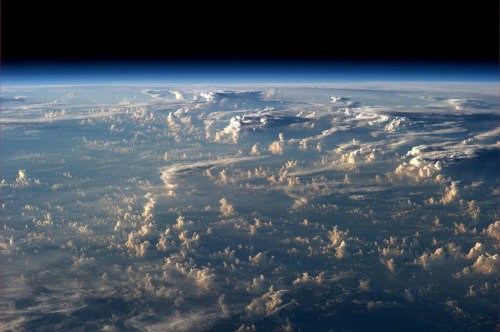
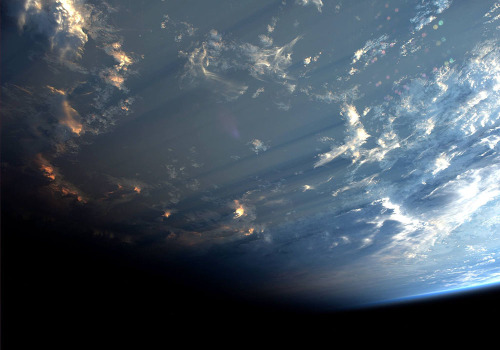
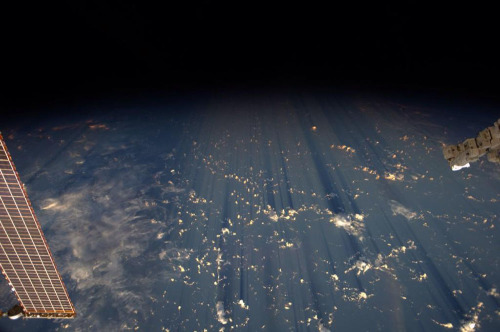
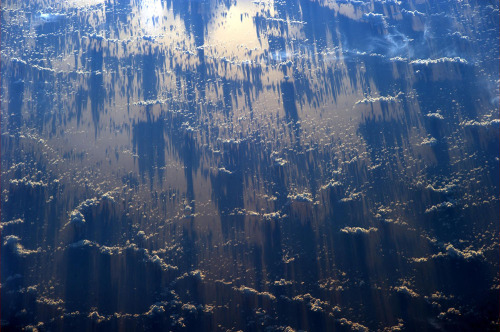
Clouds cast thousand-mile shadows into space when viewed aboard the International Space Station
-
 daytona-beach-life liked this · 7 months ago
daytona-beach-life liked this · 7 months ago -
 bearlyheresblog reblogged this · 7 months ago
bearlyheresblog reblogged this · 7 months ago -
 bearlyheresblog liked this · 7 months ago
bearlyheresblog liked this · 7 months ago -
 heart-of-unicorn liked this · 8 months ago
heart-of-unicorn liked this · 8 months ago -
 headlesssamurai liked this · 9 months ago
headlesssamurai liked this · 9 months ago -
 rareclarity reblogged this · 10 months ago
rareclarity reblogged this · 10 months ago -
 darkenergyslivers reblogged this · 10 months ago
darkenergyslivers reblogged this · 10 months ago -
 rareclarity reblogged this · 1 year ago
rareclarity reblogged this · 1 year ago -
 rareclarity liked this · 1 year ago
rareclarity liked this · 1 year ago -
 jerzee55z liked this · 1 year ago
jerzee55z liked this · 1 year ago -
 concephenomenontunidentified liked this · 1 year ago
concephenomenontunidentified liked this · 1 year ago -
 a-dream-seeking-light liked this · 1 year ago
a-dream-seeking-light liked this · 1 year ago -
 ilmi0labirint0 liked this · 1 year ago
ilmi0labirint0 liked this · 1 year ago -
 ichitomozou liked this · 1 year ago
ichitomozou liked this · 1 year ago -
 i-j0s liked this · 1 year ago
i-j0s liked this · 1 year ago -
 n09m19changsblog liked this · 1 year ago
n09m19changsblog liked this · 1 year ago -
 whitewalker13 liked this · 1 year ago
whitewalker13 liked this · 1 year ago -
 manifessto liked this · 1 year ago
manifessto liked this · 1 year ago -
 rebel-heart-gypsysoul liked this · 1 year ago
rebel-heart-gypsysoul liked this · 1 year ago -
 i-j0s reblogged this · 1 year ago
i-j0s reblogged this · 1 year ago -
 shannybangbang reblogged this · 1 year ago
shannybangbang reblogged this · 1 year ago -
 moon-light-dreaming reblogged this · 1 year ago
moon-light-dreaming reblogged this · 1 year ago -
 il-faut-etre-shooter liked this · 2 years ago
il-faut-etre-shooter liked this · 2 years ago -
 likecottxncandy liked this · 2 years ago
likecottxncandy liked this · 2 years ago -
 thejrtlikes liked this · 2 years ago
thejrtlikes liked this · 2 years ago -
 1997k reblogged this · 2 years ago
1997k reblogged this · 2 years ago -
 1997k liked this · 2 years ago
1997k liked this · 2 years ago -
 rlephant liked this · 2 years ago
rlephant liked this · 2 years ago -
 darkhawk1126 reblogged this · 2 years ago
darkhawk1126 reblogged this · 2 years ago -
 darkhawk1126 liked this · 2 years ago
darkhawk1126 liked this · 2 years ago -
 tenigam reblogged this · 2 years ago
tenigam reblogged this · 2 years ago -
 tenigam liked this · 2 years ago
tenigam liked this · 2 years ago -
 graylok reblogged this · 2 years ago
graylok reblogged this · 2 years ago -
 lillyli-74 liked this · 2 years ago
lillyli-74 liked this · 2 years ago -
 luciphoenix reblogged this · 2 years ago
luciphoenix reblogged this · 2 years ago -
 theworldisherstage liked this · 2 years ago
theworldisherstage liked this · 2 years ago -
 nc3rdeye liked this · 2 years ago
nc3rdeye liked this · 2 years ago -
 vitamin-sea-mia liked this · 2 years ago
vitamin-sea-mia liked this · 2 years ago -
 frei-nah reblogged this · 2 years ago
frei-nah reblogged this · 2 years ago -
 darkzonez liked this · 2 years ago
darkzonez liked this · 2 years ago
Astronomy and the other wonders you witness when you look to the skies.
115 posts